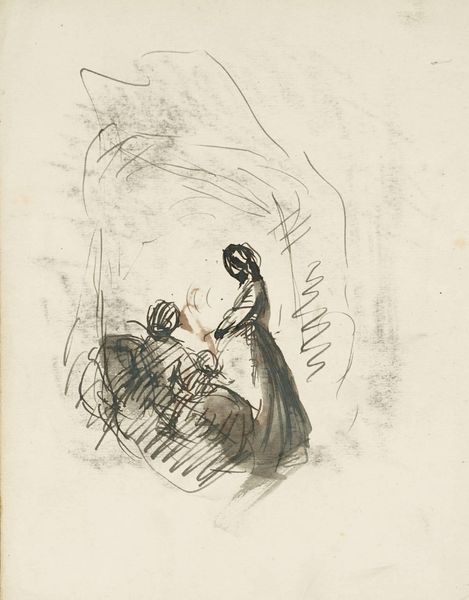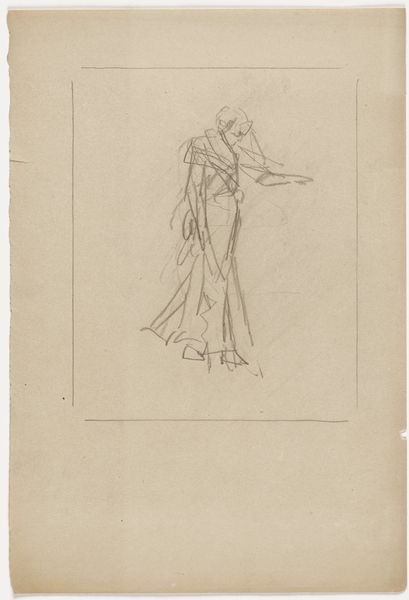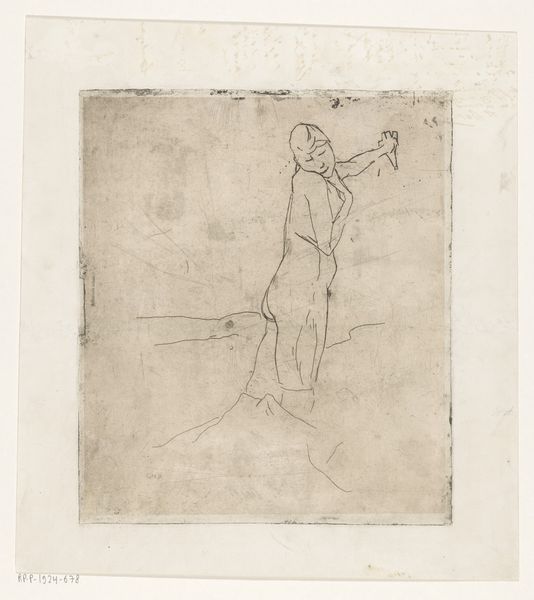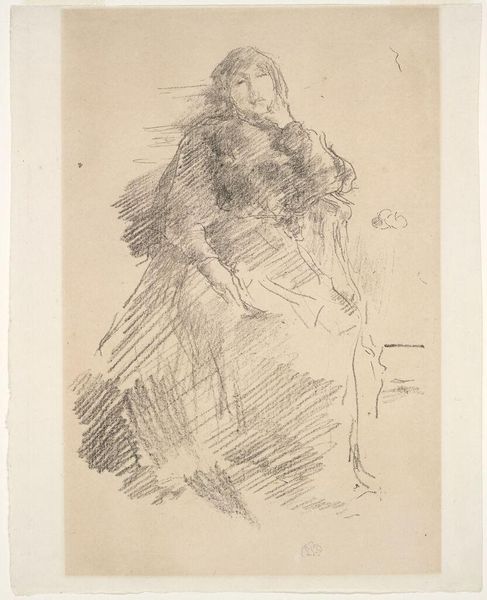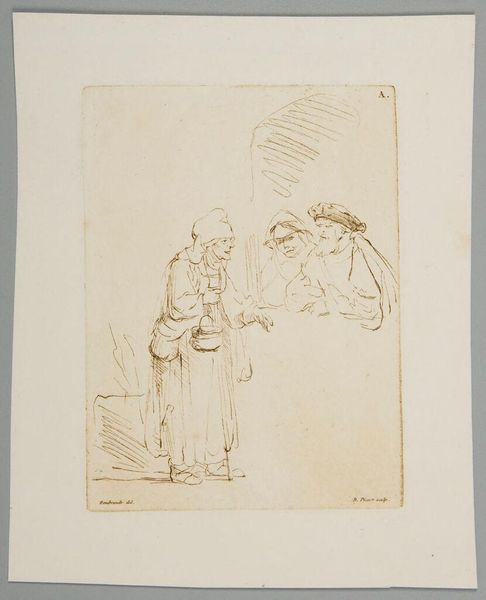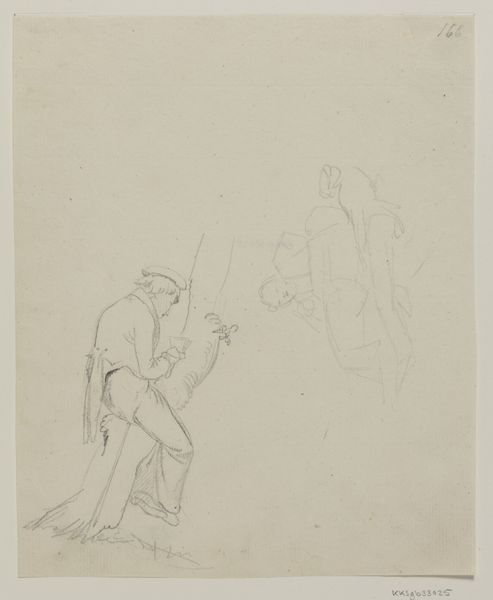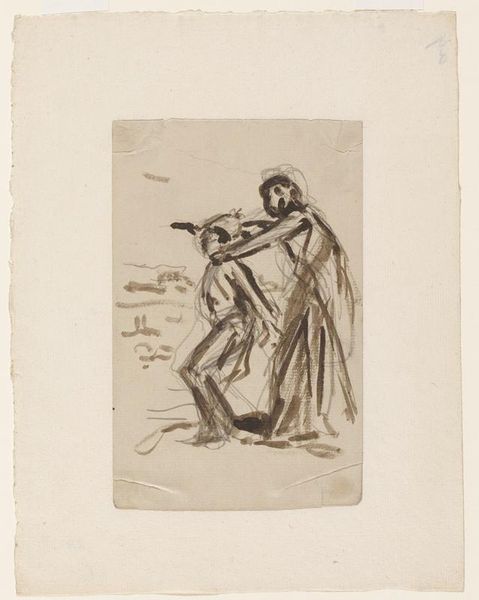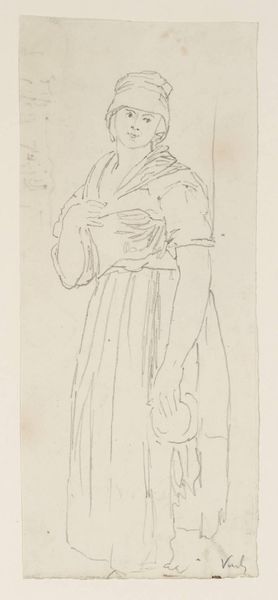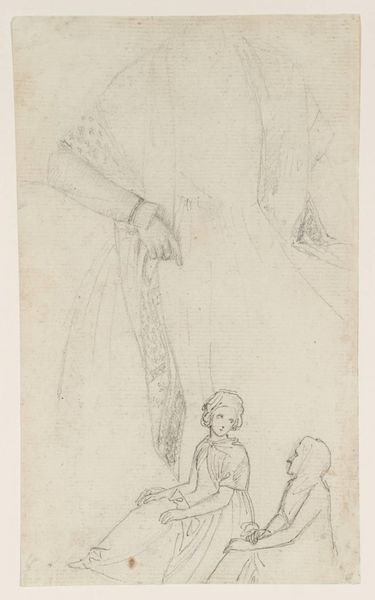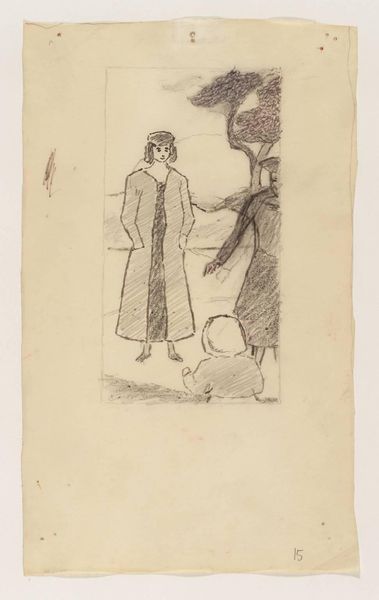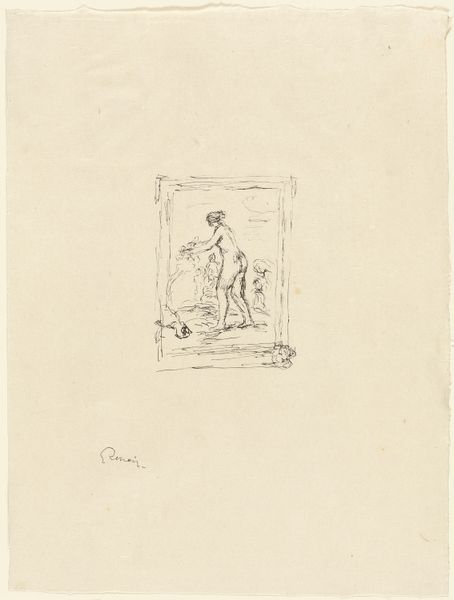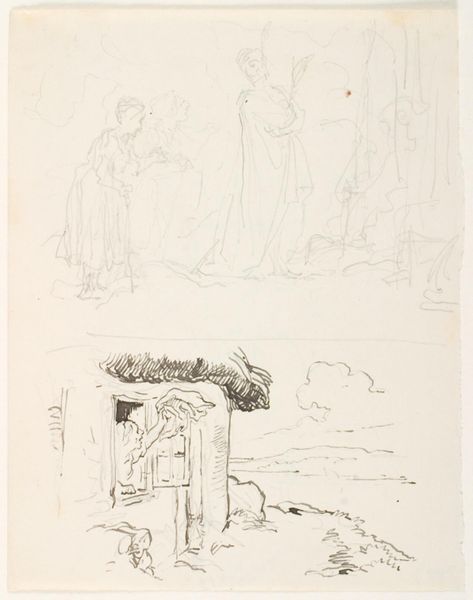
Dimensions: height 285 mm, width 178 mm
Copyright: Rijks Museum: Open Domain
Editor: This is Jozef Israëls' pencil drawing, "Vissersmeisje, een duin aflopend," created in 1905, which translates to "Fishing Girl Descending a Dune." It has a delicate, almost ethereal quality to it. What stands out to you? Curator: I’m struck by the very *ordinariness* of the scene. Israëls, with this humble pencil and paper, elevates the everyday labor of this young woman. Note how the rough strokes create a sense of texture – the sandy dune, her worn clothing. This is not a romanticized view, but a study in materiality and lived experience. How does the use of pencil, a relatively inexpensive material, contribute to this? Editor: It does feel very grounded. I guess the pencil makes it seem more accessible, less precious, more focused on the subject's reality than on making something beautiful. It avoids, in a sense, being 'high art'. Curator: Precisely. It invites us to consider the material conditions of both the subject and the artist. Where did Israëls acquire this paper? What was the process of making pencils in 1905? Was it a local material? How would the answers to those questions affect its status as art versus documentation? Editor: So, it is not just about the girl, but about the context in which the art was produced. I am understanding more the social factors. Curator: Indeed! By focusing on the process and the materials, we are also recognizing labor not only in the image, in the girl, but also invisible labor - of the manufacturer, the person who transported material. We expand our perspective of artistic intention, production and consumption of an image. Editor: I see it in a different light now. It makes me want to research more! Curator: Excellent. And I hope you see more value, also, in less ‘precious’ work. Material considerations transform this drawing into something greater than the scene it shows.
Comments
No comments
Be the first to comment and join the conversation on the ultimate creative platform.
